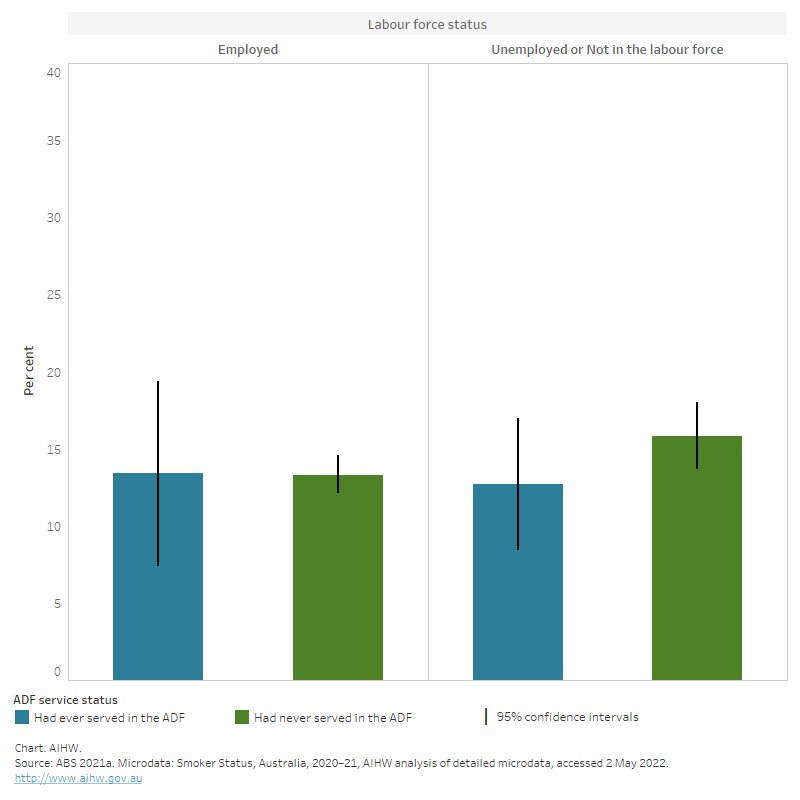Labour force status
Unemployment is a significant event in a person’s life, and is strongly related to their health outcomes. In the broader Australian population, unemployment can increase engagement in health risk behaviours such as smoking, with nearly twice as many unemployed Australians smoking daily compared with those who are employed (20% compared with 11%, respectively) (AIHW 2020). Despite income decreases associated with job loss, people generally do not quit smoking when they become unemployed (Hummel et al. 2019).
How did we define labour force status in this report?
Labour force status refers to a person being either in the labour force (employed or unemployed) or not in the labour force. An individual’s labour force status is influenced by their choices and life circumstances as well as by broader conditions of the labour market.
In this report, labour force status has been defined as:
-
Employed – includes people who had a job or business, or undertook work without pay in a family business the week prior to the survey, including being absent from their job or business.
-
Unemployed/Not in the labour force – includes people who were not employed and actively looked for work in the four weeks prior to the survey and were available to start work in the week prior to the survey, as well as people who were not in the labour force (for example retirees or persons not looking for work) (ABS 2020).
For more information, see Microdata: Smoker Status on the ABS website.
Analysis of the ABS Smoker Status, Australia 2020–21 data set indicated that in 2020–21, for males aged 18 years and over who had ever served in the ADF:
- across both labour force status categories, rates of current smoking were similar to males who had never served in the ADF (Figure 4).
- among those who had ever served, there was no difference in the rate of current smoking between those who were employed and those who were unemployed or not in the labour force (13% for both).
- among males who had never served in the ADF, rates of current smoking were slightly higher among those who were unemployed or not in the labour force, than those who were employed (16% and 13%, respectively).
Figure 4: Current smoker status of males, by labour force status and ADF service status, 2020–21
The bar chart shows that smoking rates among males were similar between ADF service statuses, regardless of labour force status.



